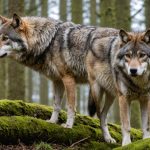Landmark Species Recoveries across the UK
The United Kingdom has witnessed several conservation success stories UK that highlight effective efforts in restoring native wildlife. One of the most celebrated cases is the UK species recovery of the red kite. Once near extinction in the 20th century, red kite populations have soared due to targeted breeding programs and legal protection, with nesting pairs increasing steadily over recent decades. Similarly, the bittern, a secretive marsh bird, has shown remarkable signs of recovery. Thanks to habitat restoration and careful management of wetland areas, the bittern population has grown, reversing years of decline.
Another standout is the large blue butterfly, whose numbers plummeted due to habitat loss and complex ecological needs. Intensive conservation work, including habitat recreation and monitoring, has led to a significant wildlife population increase, especially in select British locations. These successes span several decades, marking major milestones from the 1980s onward, with ongoing efforts ensuring long-term survival. Such examples underscore how targeted conservation actions can yield measurable and sustainable results for UK wildlife.
This might interest you : What new policies are being implemented to protect UK animal habitats?
Habitat Restoration and Rewilding Initiatives
Many UK habitat restoration efforts have gained attention for their innovative approaches to conservation. Among these, the Knepp Estate rewilding exemplifies how allowing nature to reclaim land can boost biodiversity. This ambitious rewilding project in the UK involves minimal human intervention, enabling native species to flourish and ecosystems to self-regulate.
Similarly, the Great Fen Project focuses on marshland restoration, peatland regeneration, and reestablishing native grasslands across the England-Scotland border areas. Restoring peatlands is crucial since they act as carbon sinks while supporting rare species, making these conservation projects in England, Scotland, and Wales integral to combating climate change.
Also read : Is the Reintroduction of Wolves in the UK a Feasible Option?
Across these initiatives, notable ecological improvements have been recorded. Increased populations of birds, mammals, and insects emphasize the success of restoring natural habitats. Such UK habitat restoration projects provide valuable lessons on balancing human land use with ecological integrity, underlining the importance of continued support for rewilding endeavors to sustain long-term environmental health.
Key Organizations Driving Conservation Success
In the UK, conservation organizations such as the RSPB, National Trust, and Wildlife Trusts are vital to safeguarding natural habitats and biodiversity. These groups lead numerous initiatives that translate into measurable conservation outcomes. The RSPB focuses heavily on bird protection and habitat restoration, managing nature reserves across the country. Meanwhile, the National Trust combines heritage preservation with environmental stewardship, maintaining rural landscapes and ancient woodlands.
Collaboration is a cornerstone of their effectiveness. These organizations work closely with local communities, fostering stewardship and awareness that enhance project sustainability. For example, Wildlife Trusts often engage volunteers for monitoring and habitat management, adding grassroots momentum to national efforts.
Funding for conservation projects comes from a blend of membership subscriptions, grants, and partnerships with government and private sectors. Such financial support enables these organizations to drive innovation in habitat management and species recovery programs.
Together, these conservation organizations UK create a network of expertise and resources. Their coordinated actions demonstrate how strategic partnerships and community involvement are essential for enduring environmental success.
Data-Driven Results and Measurable Conservation Outcomes
Assessing UK conservation outcomes relies heavily on robust conservation data. Recent research underscores tangible biodiversity gains UK-wide, with species and habitat recovery rates showing positive trends. For example, scientific surveys reveal that targeted habitat restoration has increased populations of certain native species by measurable percentages within monitored areas.
Key successes stem from combining traditional monitoring with modern technology. Remote sensing tools and automated sensors now provide real-time habitat condition data, enabling precise interventions. Additionally, citizen science plays a vital role, with volunteers contributing observations that supplement formal datasets, enhancing coverage and accuracy.
One case study exemplifies measurable biodiversity gains UK projects: a wetland restoration initiative documented a 30% rise in amphibian species over five years, confirmed through systematic surveys augmented by community reports. This blend of technology and public involvement ensures transparent, data-driven evaluation of conservation strategies, fostering adaptive management to maximize ecological recovery.
Ultimately, integrating diverse data sources produces reliable evidence of progress, affirming the value of conservation efforts and guiding future UK conservation outcomes effectively.
Resources and Further Exploration
Discovering credible UK conservation resources is key to deepening your understanding of ongoing efforts and triumphs. Official reports provide detailed insights into projects, offering data-driven evidence of progress. Infographics are excellent for quickly grasping complex information, highlighting the most impressive conservation successes across the UK in a visually engaging way.
For those seeking educational conservation UK materials, numerous platforms offer accessible guides and lesson plans tailored to different audiences. These resources not only educate but also inspire practical involvement, encouraging individuals to participate in local initiatives or support broader campaigns.
If you wonder how to get started or where to find trustworthy information, numerous government and non-governmental organizations maintain updated resource hubs. Engaging with these materials can foster a better grasp of conservation challenges and solutions, guiding your journey from learner to active contributor in UK conservation.
Remember, leveraging high-quality information supports informed decisions and further empowers conservation success stories. For a curated collection of resources and expert guidance, explore detailed sites dedicated to UK conservation efforts.





